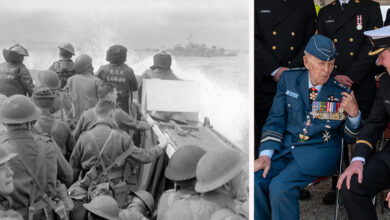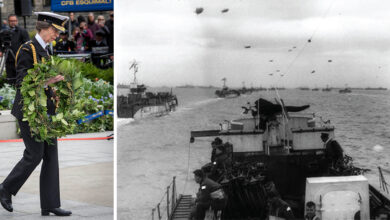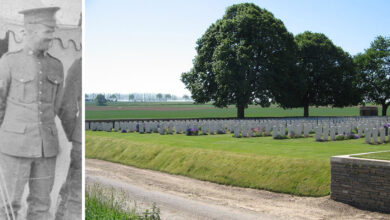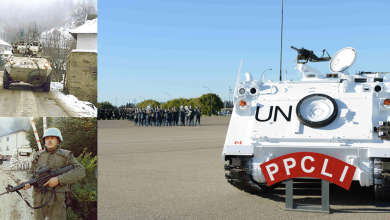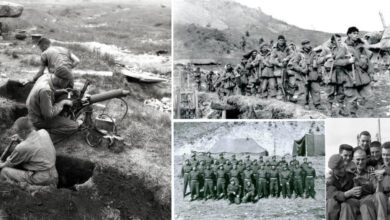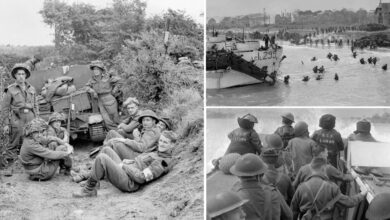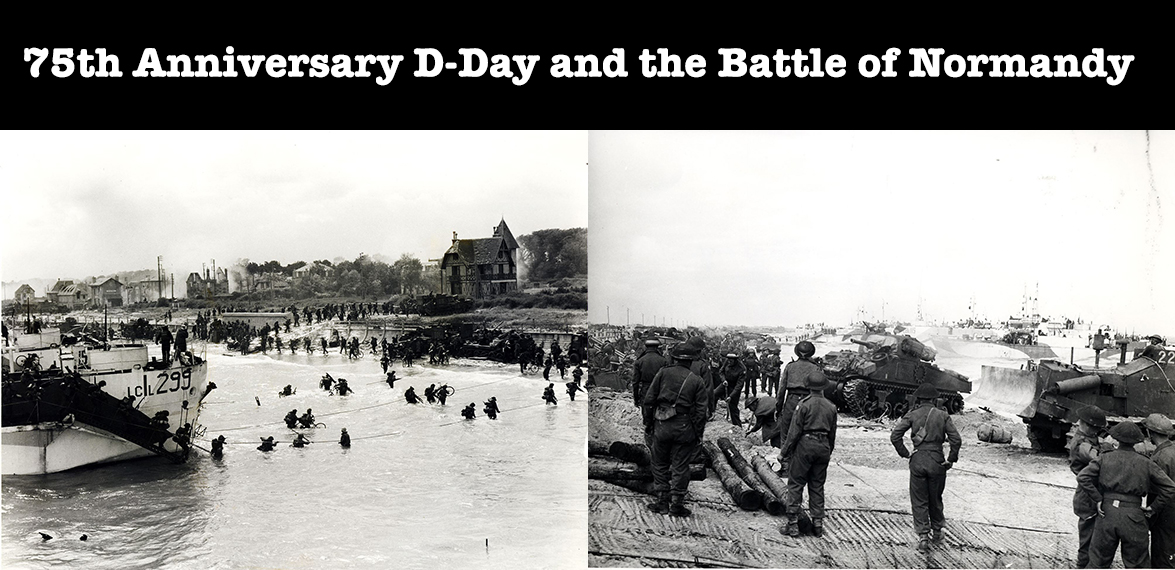
On June 6, 1944, which has come to be known as D-Day, Allied troops started the Operation that would eventually defeat the Nazis. Called Operation Overlord, began with an invasion on five beaches on the coast of France. By nightfall, 156,000 allied soldiers had arrived in Normandy.
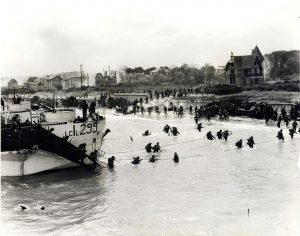
Photo: Gilbert Alexander Milne/Canada. Dept. of National Defence/Library and Archives Canada/PA-122765
By June 11, the beaches of Normandy were fully secured. Over 326,000 troops, more than 50,000 vehicles and about 100,000 tons of equipment had landed at Normandy.
The allies would continue to fight their way across Normandy, against some very determined German soldiers. By the end of June, the Allies had taken the port of Cherbourg, landed about 850,000 troops and 150,000 vehicles in Normandy, putting them in the position to continue their march across France.
Before the end of August 1944, the Allied troops had reached the Seine River, Paris had been liberated, and the Germans had been taken out of northwestern France, concluding the Battle of Normandy. After which the Allied troops prepared to enter Germany to meet up with the Soviets who were coming in from the east.
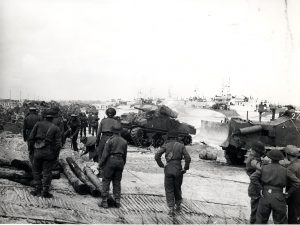
Photo: Canada. Dept. of National Defence / Library and Archives Canada / PA-132898.
It took another 11 months before the Nazis were finally defeated.
Nazi forces began to take a turn for the worst. This invasion prevented Hitler from sending troops to France to build his defence against the Soviets. On May 8, 1945, the Allied troops accepted the surrender of Nazi forces. A week prior to the surrender, Hitler died by suicide on April 30, 1945.
While D-Day took place on June 5, 1944, preparations for the battle actually began far earlier. According to the BBC, preparations came as early as 1942 when the BBC put out a call for photos and postcards of the European Coast. It turns out they were actually collecting intelligence in the hopes of finding the best beaches to land an invasion force. Such a long lead time, meant many layers to the plan, and the ability to look at the fine details.
The BBC also reported, interestingly, part of their preparations for the Operation involved an incredibly elaborate plot to trick the Nazis into thinking that Allied forces were actually going to land in Calais. Not only did this involve misinformation spread through a web of spies, double agents and controlled leaks of information, but the Allies even went so far as to create an imaginary base in Kent, complete with invented troops, inflatable tanks, and parachute dummies, in order to help fool the Nazis.
The campaign was so successful that even after D-Day, the Nazis left some of their best troops near Calais, thinking there would be a second invasion.
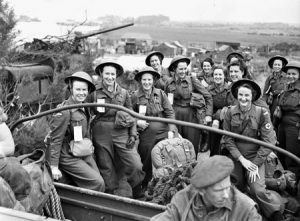
Photo: Harold G. Aikman / Canada. Dept. of National Defence / Library and Archives Canada / PA-108174
The Allies were also very particular in the timings of the invasion. They wanted to land on a full moon with a spring tide. The idea was that they could land at dawn when the tide was halfway in. This criteria significantly limited it to only a handful of suitable days for the invasion.
Troops were actually scheduled to invade on the 5th, but the weather was so bad that they delayed by 24 hours. Group Captain James Martin Stagg, a Scottish weatherman, made the forecast that the weather would be too terrible on the 5th, but that it would break long enough on the 6th for the invasion. Luckily for the invading force, the admiralty listened, and the prediction was accurate.
When the news came in that the Allies had invaded in Normandy, Hitler was still asleep. His Generals were too afraid to wake him, but also too afraid to send in more troops without his permission, so many crucial hours were lost until Hitler finally woke around 10 am. He was, reportedly at first excited about the invasion – he thought the Allies would be easily defeated.
While the Operation was eventually a success, on D-Day, approximately 4,400 Allied troops and thousands of French civilians died. There were also somewhere between 4,000-9,000 German casualties that day. So while we mark this date as the start of a monumental invasion that changed the course of the war, it is also a time to remember the sacrifices that were made.
Canadian officials travelled to France to mark the 75th anniversary of D-Day and the Battle of Normandy. The event took place on June 6th at Juno Beach Centre in Courseulles-sur-Mer, France.
To learn more about D-Day and the Battle of Normandy, visit Veterans Affairs Canada website.
A heartwarming story from our Allies in England
In 1944 Jim Radford was a 15-year-old ‘galley boy’ serving with the Merchant Navy on the Empire Larch. On the morning of 6th June, his first deep sea trip took him to Normandy to help build the Mulberry Harbour, allowing the Royal Navy to transport personnel, vehicles and supplies onto the beaches. 25 years later Jim returned to find a very different scene. Children were playing where soldiers had died and Jim was moved to tears. His emotional song tells that story. Jim is releasing his music to raise funds for the British Normandy Memorial.




